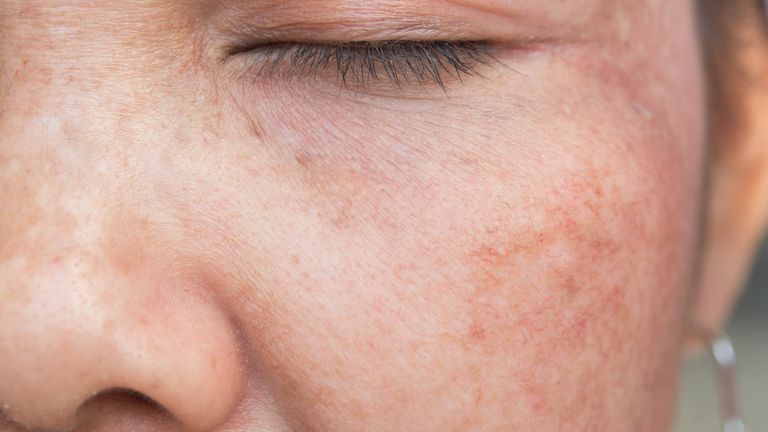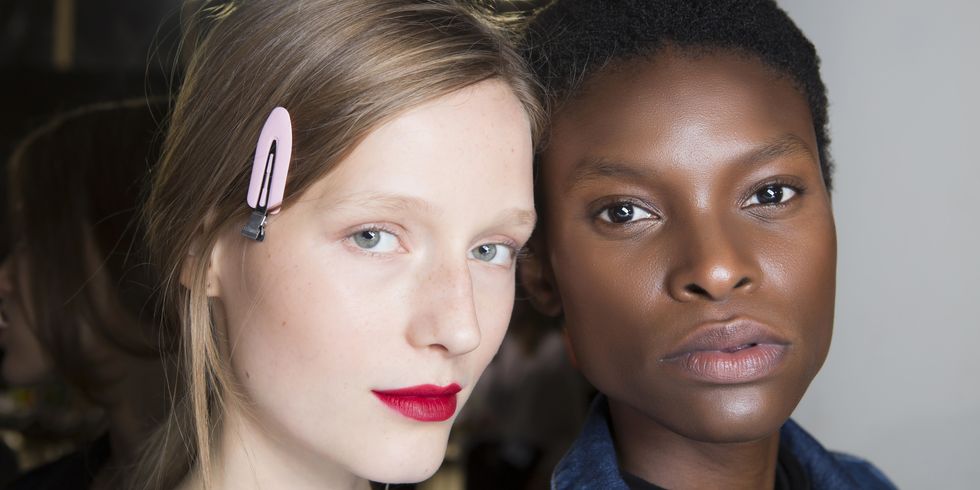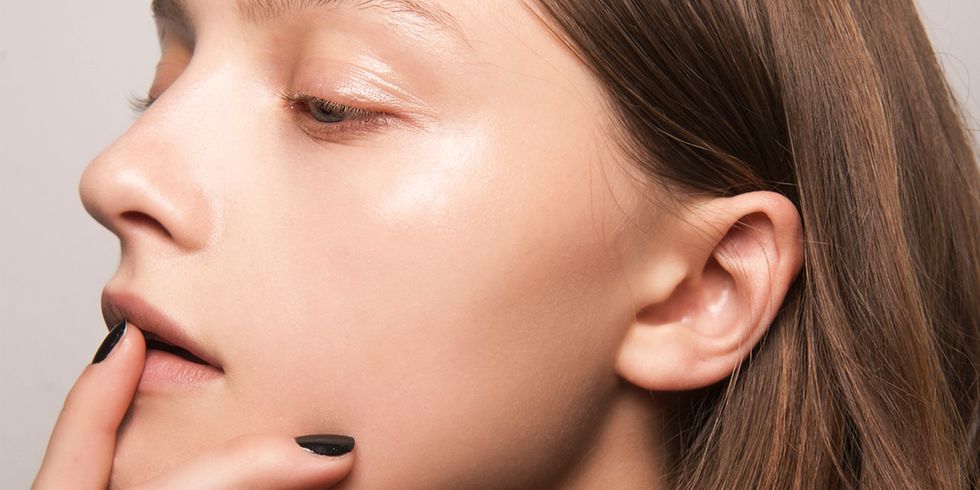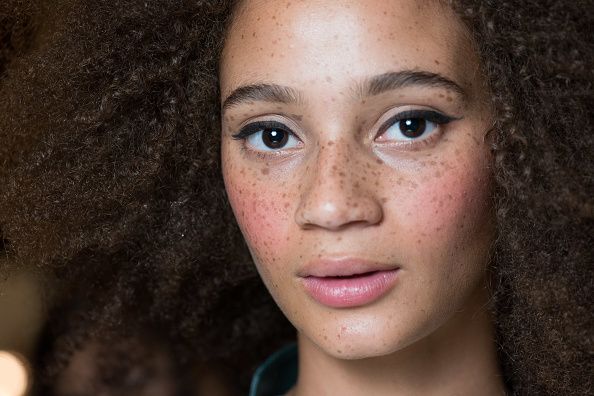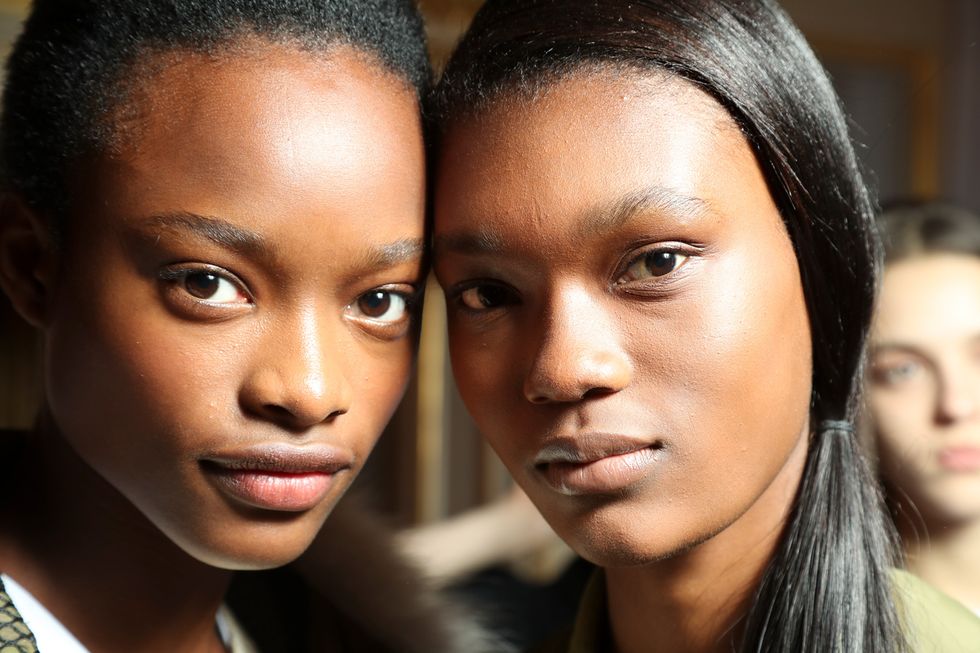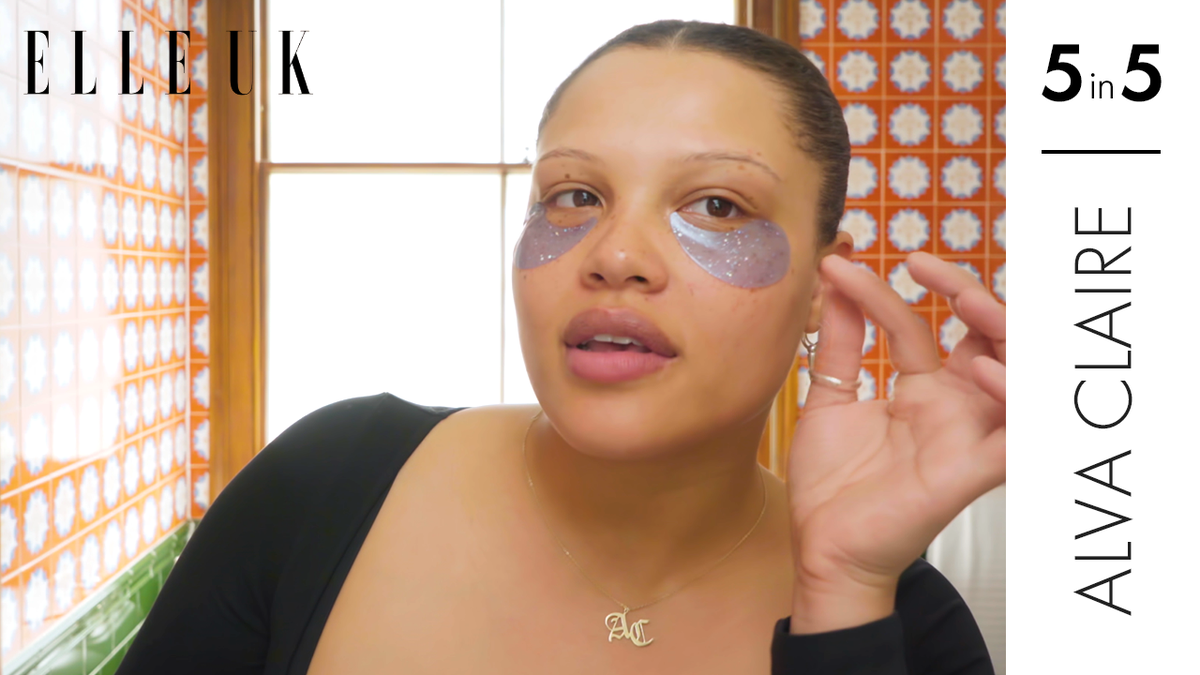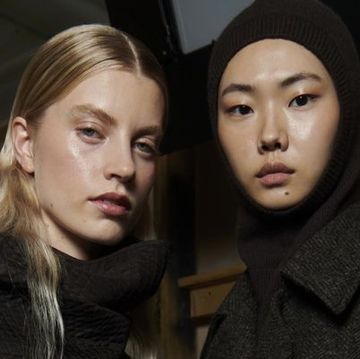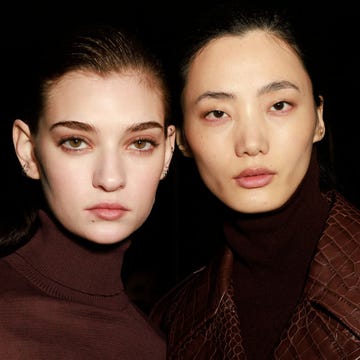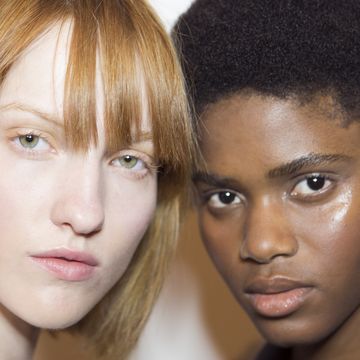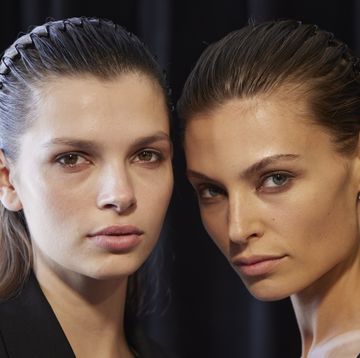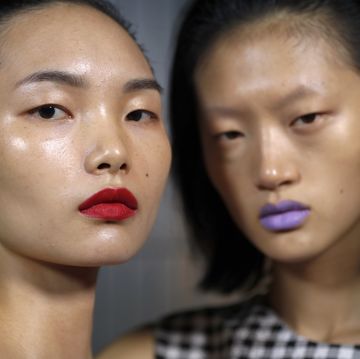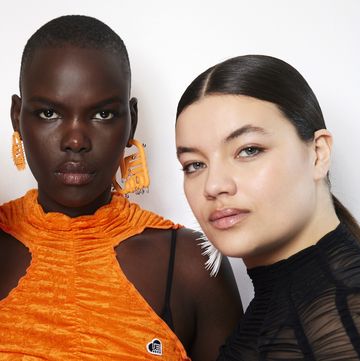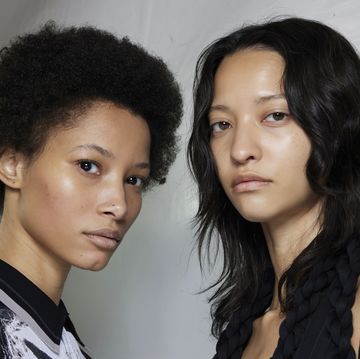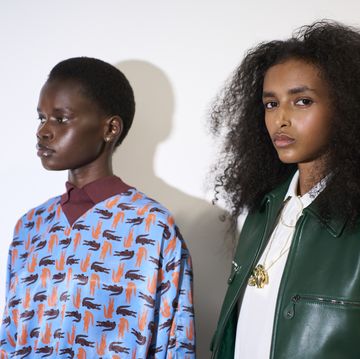I didn't have any spots as a teenager. I existed happily in my clear, ivory-skinned tower, oblivious to how lucky I was. I do remember the odd blemish, but they were always an exception rather than a rule.
Then, in my 22nd year, just when the era of problem skin should have been behind me, spots began to appear. Irregular at first, but always the white-headed, eruptive variety – no easily concealable, red, under- skin mounds for me. I put it down to the late nights, the vodka and cranberries, and the Cornish pasties that always seemed so tempting while waiting for the last train home. I hated my spots and was embarrassed by them but, after all, I was still young. As an office junior I wasn't expected to present a professional face to anyone. And friends' faces were telling me a similar story: a few blemishes were nothing I couldn't deal with.
Over the next year, though, things got worse, reaching a point where each new day brought with it a new candidate for concealer, a new part of my face to try to hide. Every morning would begin with a trip to the bathroom mirror to assess the damage. I started to stick to the skincare rules: two litres of water each day, zinc supplements, cleansing, toning and moisturising with military precision. It made no difference.
Slowly, the state of my skin became a complex. I rarely put my long hair up at work, because it provided a handy screen to hide my spots. I'd never been adept with a concealer stick and I felt as though there was nowhere to hide. I still do. I'm 30 now, and my skin is worse than it's ever been.
To anyone who doesn't suffer – and I do mean suffer – from bad skin, it probably sounds overdramatic, but spots rule my life. If my skin is having a good day – four or five blemishes, none in the active white-head phase – then I invariably have a good day. My confidence is up and I go to meetings feeling competent, in control and like the kind of person whose opinions are listened to and valued.
On a bad day – anything from five to eight spots, three or four close to eruption – I can feel like a different person. I'm so aware of my blemishes, my failings, that I'm convinced my colleagues can't see past them. I worry that I give the wrong impression at external meetings.
I've been with the same man since I was 19, so at least dating confidence isn't an issue. We never even discuss my skin, although he's seen me staring woefully in the mirror and bemoaning my blemishes. When I ask him what he thinks about my spots, he's typically unforthcoming. 'I don't even think about them – do you have any right now? I only ever really notice when you've got one that's ripe for squeezing.' I guess I should be glad for once that he's so unobservant.
Adult-onset acne is on the increase. One recent study found that 14 per cent of women aged between 26 and 44 in the UK now suffer from facial acne*. Research into the causes is ongoing, but the most popular theory is that, as our lives become more stressful and our bodies more dysfunctional, our skin suffers. It's true that some cosmetic products are 'comedogenic' (i.e. they encourage the blockage of pores and should be avoided by acne sufferers), but dermatologists don't believe that wearing make-up plays a significant role.
In my mind, bad skin is worse than having a big nose or a dominant chin. Why? Because it looks dirty. Common wisdom is that spots are the result of less-than-regular washing and a poor diet, so what is that latest crop on the side of my chin saying about me? Slapdash with the soap? Loyalty card at KFC? In the past six months alone, I've spent more than £200 on vitamins and herbal potions, another £450 on cleansers, topical creams, on-the-spot remedies and scrubs, not to mention the £60 a month I invest in facials. Does my skin convey that message? Not unless it's in Braille.
Since I told a few friends – OK, the entire ELLE office – that I was writing an article about acne, I've realised how many people have a story to tell about their skin. I was so busy picking on my own flaws, I never noticed that anyone else was having issues. One of my best friends, Gemma, 29, is gorgeous. A brunette who never has to buy her own drink in a bar, it's a running joke in our group that she needs at least two hours' notice to get ready to leave the house. The reason? Red, painful blemishes, which almost always leave a scar and take an hour and two layers of Lancôme to cover. 'I hate the thought of anyone seeing me without make-up,' she says. 'I have friends I've known for 15 years who've never seen me without foundation on.'
A colleague – one of the most groomed women in the office with beautifully clear, even skin – tells me she spent her teens refusing invitations, thanks to a prevalent case of teenage acne, only cured by a prolonged course of antibiotics. Once the incredulity fades, I recognise that her admission has made me like her that little bit more – funny how, in others, flaws are so appealing. Even Kate Winslet, knows what I'm talking about. 'Since I turned 30,' she says, 'I've had an acne problem on my chin. I'm like everybody else – I just know how to cover it.'
So I'm not the only one, but the scars on my chin are proliferating. My battle with the blemish is stepping up a gear. I'll bring in my lunch to save for that cracked black leather Mulberry clutch, but I also have a mortgage, so my splurges have to be reasoned. When I bought my Tom Ford glasses, it was simple – £360 divided by daily wear, meant that they were less than £1 a day if they only lasted a year. For my skin, I'd pay that five times over. The value of blemish-free skin every day? Bottega has nothing that even comes close.
The benefit of an ELLE inbox is access to the latest beauty developments and I'm not too polite to take advantage. I come across the new Keraskin Esthetics treatments offered by Urban Retreat and put in a call. I like the sound of this because it's backed up by science – as L'Oréal's first professional skincare brand, 100 years of research has been put to use to produce a range of products and treatments that aim to rebalance the skin.
As part of the process, the skin is diagnosed and a specific maintenance programme prescribed. My therapist and I discuss my face – oily in places, dry in others; I've always struggled to get the balance right. We spend 10 minutes diagnosing, then she gets to work exfoliating, cleansing, moisturising and massaging. Afterwards, my skin is softer than I've ever felt it and the feeling lasts, thanks to the Rice Lift Moisturiser – the best I've ever used – and Serum 3C + Vitamin C Radiance Booster (it has to be kept in the fridge – now that's science). The bottom line, though? The spots are still there – there are fewer of them, but they're still there. Next, please.
OK, so now I'm thinking drastic action, which takes me to Harley Street. Aesthera PPX is the latest development in light- based technology, known as photopneumatic therapy. It costs £350 per treatment (or £1,450 for a course of six), but it's also the only laser treatment that has been approved by the US Food and Drug Administration (FDA) for the treatment of comedonal acne (blackheads and whiteheads). The literature claims that most patients experience a visible improvement around 24 to 48 hours after treatment and, for me, they're the magic numbers.
Friday morning, 9am, and I find myself, foundation-free, in the plush reception of a private clinic. Mid consultation, a small part of me still hopes the nurse will scoff at my skin-problem protestations: 'Call that acne? I can barely see anything.' She doesn't, of course, just explains the treatment and tiptoes kindly around mentions of my 'active' spots.
Ten minutes later, said nurse is vacuuming my face – literally sucking the impurities out of my skin. It feels bad, but it feels so good, too. I want to feel clean, deep- down clean, even if it takes the equivalent of a Dyson rolling over my face. An hour later and, as I weave my way up Oxford Street, I'm a jumble of regret and expectation. I wasn't prepared for the red marks littering my face, or the fact that make-up is best avoided for two days after the treatment, but I'm allowing myself to hope that this is the beginning of my new, clearer life.A few days later, there are signs of improvement. Not many, but signs, nonetheless. And when I go back for my second instalment, I've been new-spot free for 48 hours. It's a milestone. I'm still getting the odd breakout, but they're healing more quickly and that's a definite improvement.
The most significant change, though, is how I feel about my blemishes. Take this morning, when I woke up and clocked the two spots on my chin, one on my upper lip and one in the middle of my cheek. I felt irked, but not depressed. Telling everyone about my secret shame, and hearing their own tales of imperfection, has given me perspective. I don't think any the less of them for their less-than-pristine skin – in fact, I like them more.
My next laser treatment is all booked – any progress is good progress as far as I'm concerned – but my mania has gone. I'll never learn to love my spots, but I think I'm learning to look past them.
